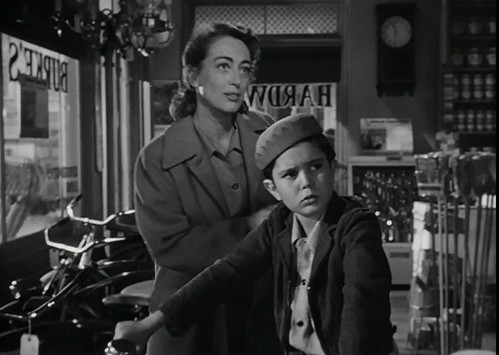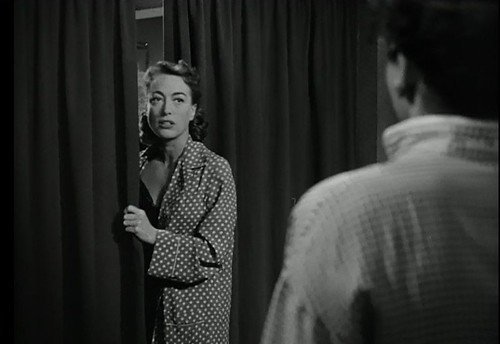We started to wonder: How can you tell the story of the downfall of Mary Pickford and not include the cause?
Mary Pickford was one of the first stars of film. Starting in 1913, her popularity became noticeable leading to her requesting pay worthy of the audience she was pulling in and for her name to be above the title starting with 1914's Hearts Adrift. Tess of the Storm Country would cement her film stardom (the original, she remade the 1914 film eight years later). She was 22 in 1914 but popular for playing little girl roles. She would continue playing these roles: The Poor Little Rich Girl, Rebecca of Sunnybrook Farm and The Little Princess in 1917; Daddy-Long-Legs in 1919; Pollyanna in 1920 . . .
They were hits along with many more. In 1921, she played the lead role in Little Lord Fauntelroy and also the boy's mother -- she was 29-years-old. At 33, she was playing a young orphan in Little Annie Rooney.
This created a problem Pickford was aware of. She needed to be playing more mature roles. Though she had a huge fan base for these little girl roles, she also faced growing barbs and resistance. This usually gets left out of the books and the documentaries -- as if 1920 wits weren't going to take a crack at a grown woman playing 12-year-olds?
Along with needing to find a new screen persona, she needed to face a major change in the industry. Mary Pickford was the star of silent films. As the success of 1927's The Jazz Singer made clear, 'talking pictures' were where the industry was going.
Mary Pickford made Coquette, her first talking film, in 1929. It was her only sound picture to do well at the box office. She played a young woman and she cut off the children's curls. Her fame meant that people would buy tickets to hear her speak onscreen -- especially since many of the silent stars were stalling on doing their first talkie. It's a shame she chose to play the nothing role. She did win the Academy Award for Best Actress but it's not a film that's lasted and it's a performance that wasn't well received by critics in real time.
Coquette helped bury her. She'd never have another successful film. And you can find most of the above in any book on Pickford. But why was 1929 so important to Pickford? Why was she being seen as a witch and worse for the first time in her career before Coquette even came out?
What's that?
The books and documentaries don't tell you she was seen as a witch?
Ladies and gentlemen, the one who slayed Mary Pickford.

That's Joan Crawford, the ultimate film star. She'd been a celebrity for movie roles and press coverage and then, in 1928, the silent film Our Dancing Daughters made her a star.
Joan was fresh and of the period, a jazz baby, while Mary Pickford was causing giggles as she continued playing children onscreen -- even after she'd left her first husband to marry Douglas Fairbanks and set up house on the Pickfair estate.
It was Douglas Fairbanks Jr. that Joan would first encounter in 1928, a romance would develop much to the delight of the movie magazines. But as Motion Picture, Photoplay and numerous other magazines -- as well as many papers -- made clear, there was a problem in the romance: Doug Jr.'s step-mother did not approve of Joan Crawford.
Mary Pickford was "Little Mary" to her fans. The proletariat poster gal, on the side of the worker, playing working class roles (when she pulled in audiences). And here she was snubbing Joan Crawford who was on the cusp of her first bout of movie star fame, the shop-girl roles she played at MGM? Joan Crawford, in those roles, epitomized the working class and the notion that there could be upward mobility in the United States.

And here was "Little Mary" saying Joan wasn't good enough? Not just for her step-son, but also not good enough to be invited to a party at Pickfair -- the parties that included hundreds of guests but Joan wasn't good enough?
Their engagement didn't result in Joan being invited to a fancy dinner or party. After they eloped in New York City, with the movie magazines beating up on "Little Mary," Joan was finally invited to Pickfair. It was a change from more recent Mary Pickford's coverage when she was being written of as a has-been in search of a new direction. Now she was the bitch who refused to allow America's newest star Joan Crawford into her home.
In this climate, "Little Mary" had cut off her mop of curls and had decided to stop playing the little girls that made her famous. Coquette benefited from the publicity that had been generated for nearly a year as Joan and Doug Jr. had begun their romance. Otherwise, it most likely would have have failed at the box office (in real time, the critics were correct, it was a lousy movie).
And that was that for Mary Pickford. She went on the big screen without the curls, not playing a little girl, after nearly a year of bad press for her treatment of Joan Crawford. Audiences looked at the screen and saw a so-so actress who didn't epitomize anything they'd embraced in "Little Mary" and that was the end of Mary Pickford's career.
Joan slayed her and her own ego brought her down. Mary Pickford who tried to pretend to be the most interested in her many fans would ignore the fans outrage over the way she was treating Crawford.
It's a mistake Joan never made. If she felt she was disappointing her fans, she'd drop a questionable boyfriend or, near the end, refuse to be photographed by the press. Mary Pickford was America's first film star, PBS told us in their documentary, and America's first has-been.
They got the second part right.
By contrast, Joan Crawford never had that problem. When the public lost interest in her shop-girl roles she was dropped by MGM. Were she Mary Pickford, that would have been the end of that. But she was Joan Crawford. So she'd go on to even bigger success at Warner Brothers -- including winning the Academy Award for Mildred Pierce.

Unlike Mary Pickford, Joan Crawford was built for stardom and that's why she was a star of the silent films in the 20s, a star of the new 'talkies' in the 30s, a star in the 40s, a star in the 50s and a star in the 60s. For five decades, she was a film star. That meant changing with evolving tastes. No frozen little girl roles for her.
Mary Pickford was a star of silent films. She was said to be a very smart business person. But where the smarts mattered, in preserving the career she wanted to carry on, she didn't have them. She engaged in a year long public feud with Joan Crawford, angering her own fans as well as other people who might have purchased tickets to her films had she not been seen as a snobbish bitch as the Great Depression was starting. To talk about how fans walked away from Mary Pickford and not include Joan Crawford in the story is to fail to tell the true story of what happened.
---------------
All screen snaps from 1950's The Damned Don't Cry starring Joan Crawford, directed by Vincent Sherman, story by Gertrude Walker, screenplay by Harold Medford and Jerome Weidman, produced by Jerry Wald and also featuring David Brian, Steve Cochran, Richard Egan, Kent Smith and Selena Royle.